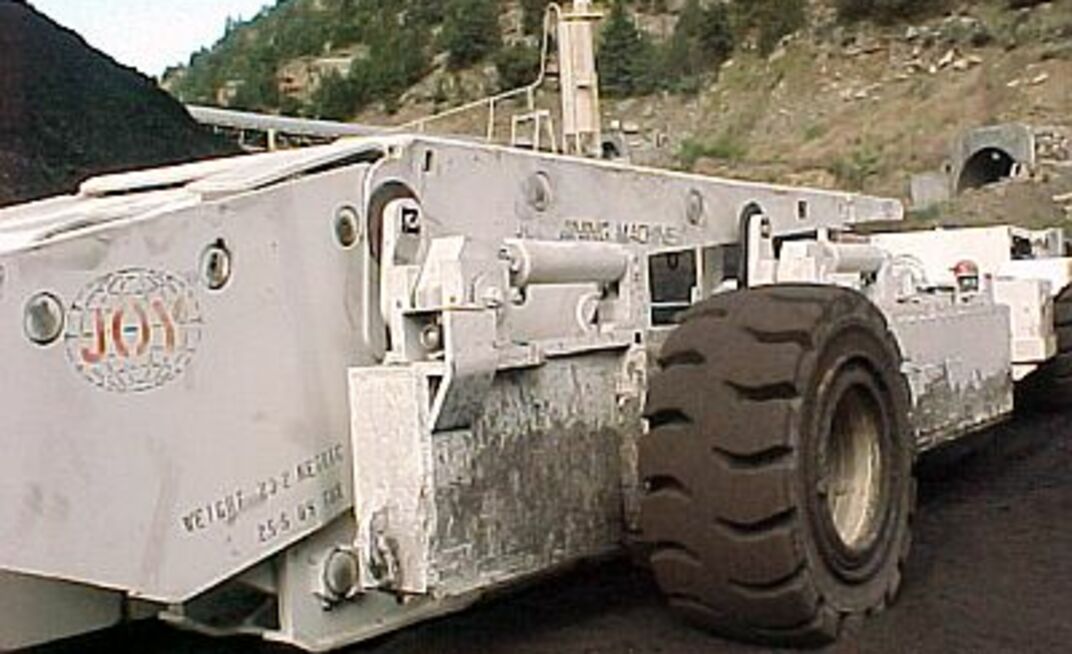Despite being relatively new to the US underground sector after developing specialty tyres for severe mining applications in 2002, TY Cushion Tire have proven their worth in some difficult longwall moves and operations. The company has registered some outstanding successes on a range of underground equipment including shield haulers, loaders, utility trucks, shuttle cars, roof bolters, skid-steer loaders and trailers.
To achieve their current line of products, the company has worked towards transforming the manufacturing process to create the side-wall aperture structure solid tyres which utilises a rubber compound which reduces total tire weight, heat build, and increases the softness of the ride.
In the early research and development stages of the underground mining products, some of TY’s existing products were modified to test in different mines in order to gain valuable knowledge before finalising design of the new product. The first set of modified tyres performed successfully through three longwall moves at one mining company’s operations.
“These mines had light shields: 17-ton. At one point during the first move they actually pushed a 130,000# shear and trailer up a steep incline. The machine itself powered out but the tyres never spun on the wheel, despite the fact that they hadn’t been designed for that type of service,” TY Cushion Tire’s mining specialist Tim Brophy said.
In a recent trial of a new tyre size (49/20.5-25), 18 tyres were run on two types of equipment at a coal mine in Utah. These included three sets of tyres for EIMCO 936-M3 shield loaders and one and one half sets for modified Wagner shield haulers (equipment modified by Mac’s Mining Repair of Huntington, UT).
“None of the tyres spun on the rim or experienced any heat build up when they were moving 31 ton shields,” Brophy said.
“The operation was very difficult because the mine encountered roof and floor problems in addition to the heavy shields they were moving. Our tyres performed well through all these obstacles.”
Despite the overall success the tyres, difficulties were experienced with chunking in the tread area. However, engineers were easily able to make modifications to resolve the issue. Of the 18 tyres in service, only one had to be changed during the longwall move because of this problem. Of the remaining tyres, many of them will continue in service indefinitely.
“We also noted very little sidewall deflection, even when under load. The good news is that our rubber compound is very tough,” he said. “However, one of the necessary modifications will be a minor compound change that will allow the tyre to deflect a little more, while still maintaining speed, load and distance capabilities.”
Brophy said initial feed back from the customers was positive as they got through a tough move with only one tyre change on four pieces of equipment. There were also no concerns about ride and traction.
TY Cushion tyres have also been used on operations involving articulating super-charged diesel-powered trucks. In one instance the tyres were used to haul heavy loads of supplies eight miles into a mine, and loads of refuse back outside in a continuous cycle. After an inspection of the tyres in June this year it was found the initial set had more than 1000 hours of service with minimal wear.
“They had been experiencing serious problems with heat buildup, and subsequent tyre tread separations, on foam-filled tyres. TY Cushion Tire’s are rated at 16 mph (25 km/h) and this application more than validates that rating,” Brohpy said.
He said the tyres also have applications for skid-steer loaders. “Every mine that tries the tyres very quickly requests that we have a look at their other problem applications,” he said.
























